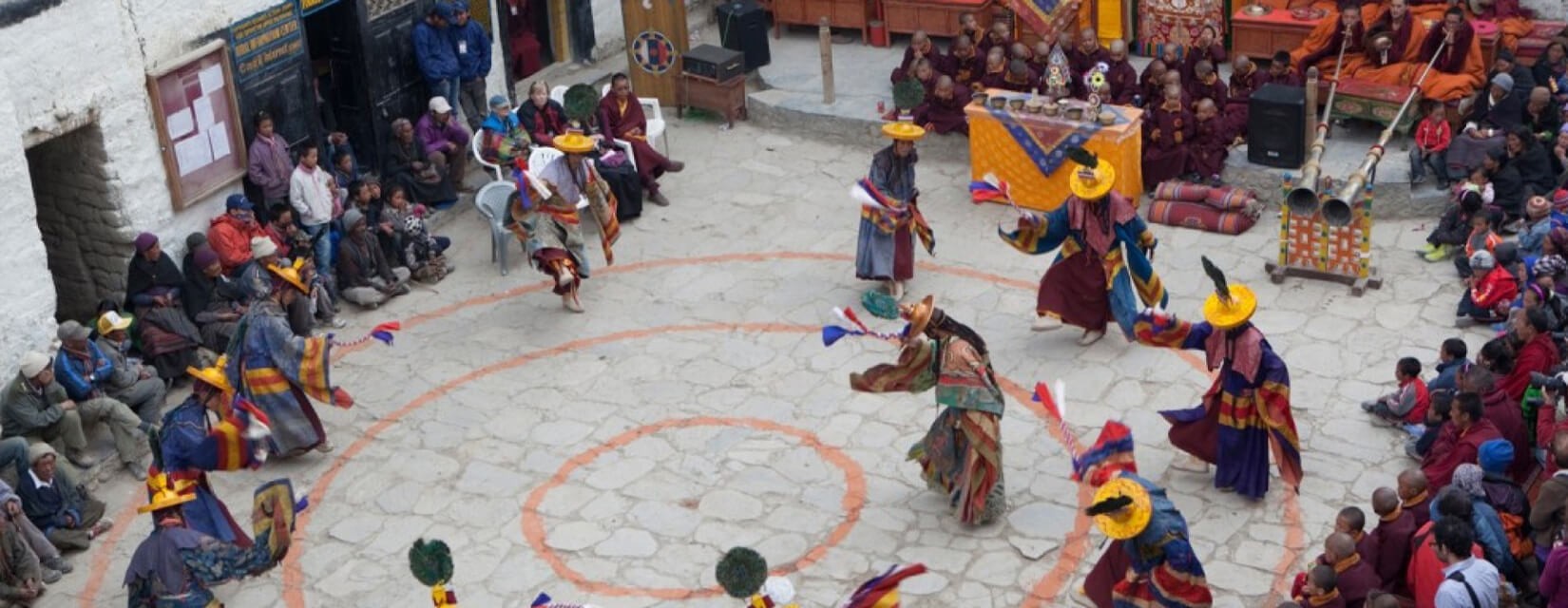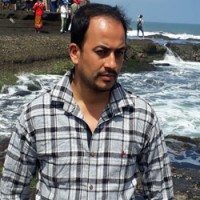About Tiji Festival Trek | Cultural & Adventure Trekking in Nepal
Tiji festival Trek - Upper Mustang Tiji Festival 2026
The Upper Mustang Tenji (Tiji) festival Trek is an annual event indigenous to lomanthang, Upper Mustang in Nepal. Tenji festival, commonly pronounced" Teeji," is an abbreviated form of Tempa chhirim, which translates to" prayer for world peace" Tenji commemorates the victory of Buddha's incarnation. Dhorji Sonam over a demon called MA TAM RU TA, whom Waxman ate and caused storms and droughts to destroy people's houses and livestock. The dance performed by the monks of lomanthang chhyode Gumba during these three days of the festival enacts the harassment of the MA TAM TU TA, the birth of Dhorji Sonam, the demon's son, and an attempt by Dhorji Sonam to return and the monster to the Buddha realm. The monks perform a dance called" TSA CHHAM "on the first day of the Tenji and "NGA CHHAM" on the second day. Tiji festival Trek is the similar package Upper Mustang Trek .
The Upper Mustang Tiji Festival Trek is a popular trekking route in the Mustang region of Nepal, known for its unique cultural and natural attractions. The Tiji Festival is a vibrant and colorful celebration held annually in Lo Manthang, the capital of the former Kingdom of Lo. This festival is a three-day ritual that showcases the traditional Tibetan culture and religious practices.Tiji Festival influenced by Tibetan Buddhism is timed to coincide with the end of the dry season (late winter/spring). The Mustagi people have their way of family life, which is quite surprising for many outsiders. All the brothers in the family are married to a single girl, what you may call a practice of polyandry.
The high desert region of the Tibetan influence, Kaligandaki, from the Tibetan border south to Kagbeni, is generally called Upper Mustang. First, explore the thousand years of the old monastery, caves, local tribes, and scenic beauties of the different landscapes. Then, make an adventure starting from the world's deepest gorge Kaligandaki Region into the world's highest regions. Lo-Mangthang Valley passes through an almost tree-less barren landscape through this trek, a steep rocky trail up and downhill, with panoramic views of Nilgiri, Annapurna, Dhaulagiri, and several other peaks. The tour passes through high mountain passes, glaciers, and alpine valleys. The thousands of years of isolation have kept the culture, lifestyle, and heritage remain unchanged for centuries and to this date. The houses in Mustang are mostly made from stone and sun-baked mud bricks.
Location Upper Mustang Tiji Festival Trek
Upper Mustang is a remote region located in the north-central part of Nepal, bordering Tibet. It was once an independent kingdom and has retained its distinct Tibetan culture and traditions. Upper Mustang is located in the northern part of Nepal, bordering Tibet (China). It is a restricted area and was only opened to tourists in the early 1990s. The region is known for its arid landscapes, Tibetan culture, ancient monasteries, and the annual Tiji Festival.
Duration Upper Mustang Tiji Festival Trek
This duration includes both the trekking and festival experience.The duration of the Upper Mustang Tiji Festival Trek typically ranges from 15 to 18 days, depending on your itinerary and starting point. It includes both trekking days and time spent at the Tiji Festival itself.
Permits Upper Mustang Tiji Festival Trek
Since Upper Mustang is a restricted area, trekkers require a special permit called the "Upper Mustang Restricted Area Permit" to enter. Additionally, the Annapurna Conservation Area Permit (ACAP) is also required.
- Annapurna Conservation Area Permit (ACAP): This permit is required as the trek passes through the Annapurna Conservation Area.
- Trekkers' Information Management System (TIMS) Card: This card is also necessary for trekking in the Annapurna region.
- Special Restricted Area Permit: Since Upper Mustang is a restricted area, you'll need a special permit that can be obtained through a registered trekking agency in Nepal - Himalayan Asia Treks.
Highlights Upper Mustang Tiji Festival Trek
The Upper Mustang Tiji Festival Trek offers stunning landscapes, ancient monasteries, caves, and breathtaking views of the Himalayas. The Tiji Festival itself is the main highlight, with masked dances, ancient rituals, and cultural performances that depict the victory of good over evil.
- Tiji Festival: The main attraction is the Tiji Festival, a three-day traditional Tibetan festival celebrated in the ancient walled city of Lo Manthang. It features masked dances, cultural performances, and religious rituals.
- Scenic Landscapes: You'll trek through a stark and arid landscape, with unique rock formations, caves, and views of the Himalayan mountains.
- Tibetan Culture: Experience the Tibetan-influenced culture and lifestyle of the people in Upper Mustang. Visit monasteries and interact with the locals.
- Ancient Cave Dwellings: Explore ancient cave dwellings and monasteries carved into the cliffs.
Difficulty Level Upper Mustang Tiji Festival Trek
The trek is considered moderate to difficult due to the high altitude and challenging terrain. Proper acclimatization and physical fitness are essential. The highest point of the trek is the Lo La Pass at an altitude of approximately 4,200 meters (13,780 feet). The Upper Mustang Tiji Festival Trek is considered moderately challenging. The trek involves walking at high altitudes (around 3,800 meters to 4,000 meters) and can have rough terrain, including steep ascents and descents. Proper acclimatization is essential. The remote location also means limited access to facilities and services, so you should be prepared for basic accommodations and long trekking days.
Accommodation and Facilities Upper Mustang Tiji Festival Trek
Accommodation along the trek is basic, with teahouses and guesthouses available in some villages. The facilities can be quite simple, with shared rooms, common dining areas, and basic meals. Due to the remote nature of the trek, it's advisable to be self-sufficient with essential items like warm clothing, trekking gear, and any specific dietary preferences. There are sme luxury lodges also available in Upper Mustang Region.
Note: If you are not satisfied with this itinerary and other details, please contact us to make the itinerary and further detail as per your need. For a Fixed Tiji Festival Date, please get in touch with us.

